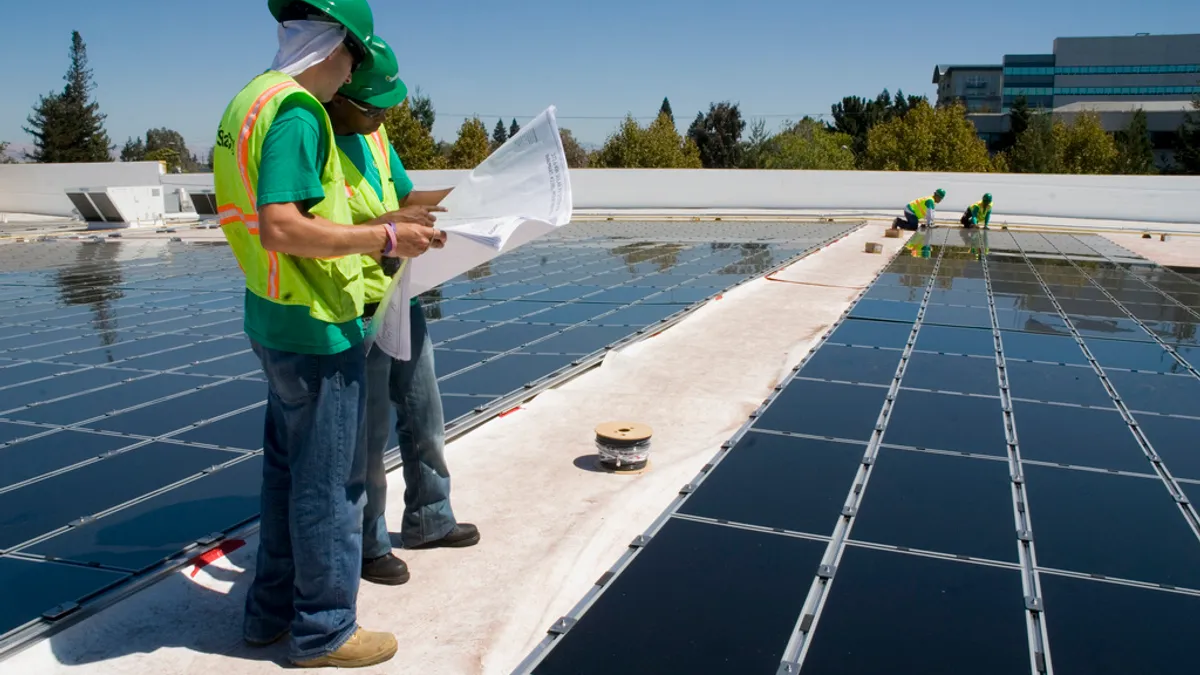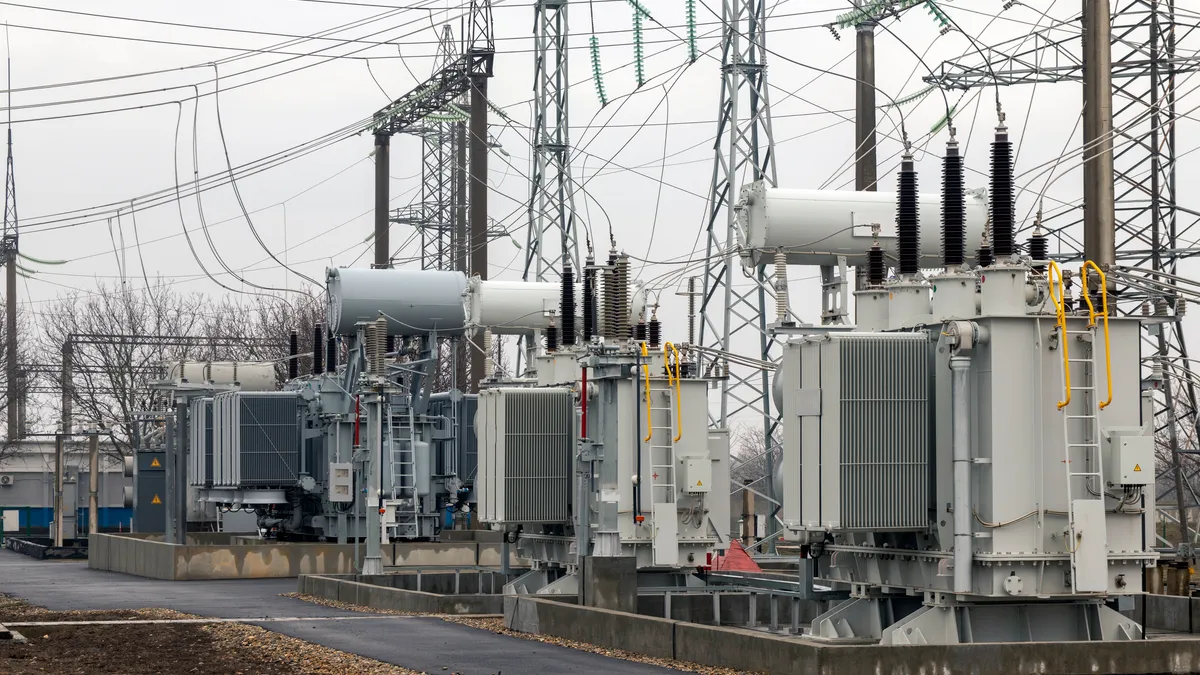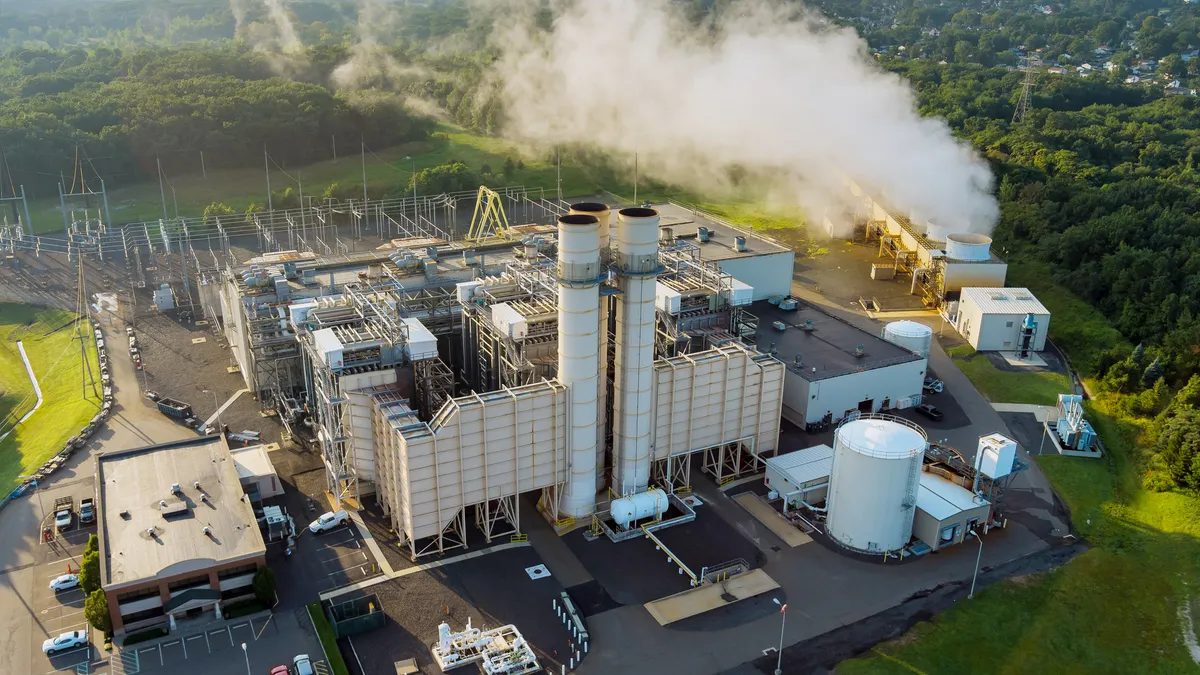Earlier this year, the Solar Electric Power Alliance, a nonprofit that encourages utility adoption of solar power, announced it would change its name.
Reflecting a shift in the industry toward the integration of a fuller slate of distributed resources, the organization would now be called the Smart Electric Power Alliance (SEPA), SEPA President and CEO Julia Hamm said in April.
That shift in approach was due to the need to look beyond simple solar and encourage utility adoption of other supporting grid resources, such as customer-sited storage, smart inverters, and new grid management software. While SEPA had always supported such technologies, their growing influence made it necessary to formally integrate them into the organization’s mission, leaders said.
That influence was on display last week, when the organization unveiled its Solar Power Player 2016 awards ahead of Solar Power International, the solar industry’s annual conclave in Las Vegas.
The five awards recognize “the potential for innovative projects and programs when utilities and their solar industry partners work together,” SEPA President/CEO Julia Hamm said.
The winners show how utilities and industry partners can get beyond policy debates, to “the solutions needed to bring more solar and other distributed technologies to the grid,” she added.
This year’s awards also reveal that both utilities and private providers are thinking beyond rooftop solar and other forms of distributed generation. Several of the awards are for ways to manage the many distributed energy resources (DER) customers are clamoring for and grid operators can use to strengthen and stabilize their systems.
IOU of the Year: Pepco
In March 2016, Pepco released a utility-built, online application for residential and small business customers who want to go solar. It has reduced the previous 40-to-45 day processing times by 10 days, according to Pepco Manager for Demand Side Management and Green Power Connections William Ellis.
The automated system’s data validation, data verification, and drop-down menus help prevent incomplete applications from being submitted, Ellis said. Customers can access the application through the utility’s online portal. Online signatures and online fee payments allow the process to be completed without time-consuming follow-up paperwork.
Another part of the processing speed comes from a Pepco-built, semi-automated technical analysis of applications. It is based on distribution system hosting capacity research funded by a grant to Pepco from the Department of Energy. It allows streamlined engineering approval for 98% of residential solar arrays, Pepco Manager for DER Planning and Analytics Stephen Steffel said.
Those advanced system monitoring and analytic capabilities will next be applied in a DER integration demonstration project, Steffel added. The utility is collaborating with private sector DER providers on the installation of a 1.7 MW photovoltaic solar system at a local university, along with smart inverters, a 500 kW/350 kWh battery storage, and flexible load controllers.
The objective is to test system impacts when control capabilities are added and the DER is used to manage voltage and power quality, he said. “The question we want to answer is how we keep a robust and stable grid and at the same time support the integration of these technologies to meet customer demand,” he said.
Solar Champion: HECO’s Nakafuji
Over 77,000 solar photovoltaic (PV) systems have been interconnected or approved by the Hawaiian Electric Companies (HECO), accounting for over 17% of its customers.
That unprecedented level of penetration of behind-the-meter generation required first-of-their-kind tools for system operators and planners, said Dora Nakafuji, the HECO director of renewable energy planning, and this year’s Solar Power Champion.
The “foundational, data-informed tools” Nakafuji and her team developed combine the utility’s interconnection data and statistical modeling to identify where the potential PV generation is on the system and how much could be exported to the grid, she told Utility Dive.
Using state-of-the-art forecasting information and distribution system sensors, the software forms a real-time awareness of the incoming generation. System operators can then see each circuit as a “virtual generator,” Nakafuji said.
The tools’ visualizations enhance that awareness. Intelligent devices, regulators, and switches at the grid edge provide new automated machine-to-machine control capabilities. In response, HECO system operators can monitor and manage power quality and voltage, as they do with their other generators.
“We were essentially blind to all the production coming back to us,” Nakafuji said. “Now we can see where it is and where it is providing energy and how much energy is coming in and we can forecast how much is coming and how variable it will be and we can use it for grid planning decisions.”
The aggregated real-time data allow system operators to treat generation variability caused by cloud cover as “solar fuel,” she added. Knowing how the output of the virtual generators on each circuit will rise and fall with the solar fuel supply “allows for traditional planning responses as if they were part of the traditional mix of generation.”
Eventually, the new tools will allow the utility to collaborate with private sector DER providers to “merge their customer-level data with our circuit-level data so that the DER fleet can help us further improve our management of the overall system,” Nakafuji said.
HECO is now working to implement the new capabilities into planning and operations procedures, she said. “That is what will allow us to use the newest technologies to manage both load and generation and move toward Hawaii's 100% renewables by 2045 mandate.”
 Public Power Utility: Village of Minster
Public Power Utility: Village of Minster
When it comes to bringing next-generation DER solutions to small public utilities, it really does take a village.
Backed by private sector investor Half Moon Ventures, the Village of Minster, Ohio, municipal utility became the first public power provider in the U.S. to invest in a solar-plus-storage system. Its bet on a power purchase agreement (PPA) that anchors a 3 MW solar array and a 7 MW/3 MWh lithium-ion energy storage system installation has paid off, big time.
“The solar is producing about 500,000 kWh per month, about what was expected for summer months, and the batteries are providing the power factor correction, as intended,” Village of Minster Municipal Utility Administrator Donald Harrod told Utility Dive.
Half Moon Ventures financed the project and paid for the storage. The storage allowed the Minster muni to defer a $350,000 investment in capacitors for power factor correction it was facing and made the bet an immediate winner.
The PPA sets the utility’s price for solar energy-generated electricity at $0.07/kWh, Harrod said. The resulting all-in $0.095/kWh cost for power matches the muni’s average retail electricity rate, allowing the village to basically break even on the power transaction.
Other benefits in the project deal, including reduced transmission charges and capacity charges from regional system operator PJM Interconnection, are providing Minster with significant savings.
“On a budget of $7 million per year, we are saving about $1 million per month, which allows us to avoid raising rates on our customers, who are also the citizens of our village,” Harrod said.
Half Moon is apparently making a satisfactory return on investment by selling frequency regulation into the PJM market. The investor is keeping details confidential “but we are doing fine financially," CEO Michael Hastings told Utility Dive recently. “I want to do more solar-plus-storage projects.”
Village leaders also see the solar-plus-storage installation as an economic development tool. A power outage could cause the Village’s three major employers, two large metal working companies and U.S.-leading yogurt-maker Dannon Yogurt to suffer significant losses, Harrod said. The enhanced electric reliability adds to the Village’s appeal as a business location.
Dannon is also considering Minster as a site for a new redistribution center and its sustainability manager recently indicated the company wants to participate in the Village’s next development, a community solar installation, Harrod said.
Every utility should at least consider doing this, he added. “They would have to look at their own systems but for us being able to reduce our peak, to save those transmission and capacity charge costs, and to do the power factor correction are very important.”
Electric Cooperative: Green Power Electric Membership
Green Power Electric Membership Corp (GPEMC), one in the 23-member National Renewables Cooperative Organization (NRCO), won the 2016 co-op award for helping 38 Georgia cooperatives grow the state’s in-development solar capacity to 240 MW.
GPEMC was Georgia’s first renewables provider and has been providing renewables-sourced generation to other co-ops in the state since 2003, according to Spokesperson Greg Jones.
Now owned by Georgia co-ops that serve 4.2 million customers, GPEMC currently has a 52 MW renewables portfolio under contract that includes solar installations, landfill gas generation, hydroelectric power, and wood waste biomass, he added.
In addition, its 52 MW Hazlehurst photovoltaic solar power is currently under development with private sector developer Silicon Ranch acting as engineering, procurement, and construction (EPC) contractor, Jones said.
GPEMC has been able to help co-ops participate in solar by pooling the demand of small owner-members. It acts as the contracting offtaker for renewables projects and then aggregates the co-ops' subscribed portions of the output to make the contract work financially.
Its Cooperative Solar, an "umbrella marketing program,” is another key lever in GPEMC's success at growing Georgia solar, Jones said. The member-owner co-ops have used it "in promoting and marketing their community and other solar projects.”
Innovative Partner: Clean Energy Collective
The “Innovative Partner of the Year” award went to Clean Energy Collective (CEC) for bringing to market an "end-to-end" software platform that simplifies the building of community solar by both utilities and private sector developers, Spokesperson Tim Braun told Utility Dive.
The Community Solar Platform (CSP) “stems from approaching utilities from day one as partners instead of as adversaries,” Braun said. The software is finding its biggest acceptance because “it enables utilities to take control themselves.”
A community solar program enables electricity customers to own a small part of a bigger array and have the savings applied to their bills. The components of such a program “are vastly different from market to market and utility to utility,” Braun added. "The CEC software provides functionality to all the kinds of utilities in all the different settings."
Founder and CEO Paul Spencer began solving the many regulatory, operational, and technical challenges unique to the business model with his first project, in 2010.
“Community solar didn’t exist until then,” Braun said.
A community solar developer faces the daunting task of acquiring a large aggregate of customer-subscribers to the array. The developer must then make certain those customers’ bills are seamlessly credited with their portion of the array’s output by the utility.
The CSP software includes solutions for the financing, legal, marketing, construction, and maintenance complexities the developer faces along the way. The solutions come out of CEC’s experience in putting “more than twice the number of community solar programs in operation than all other third-party providers combined,” Braun said.
Utilities can and have licensed the CSP software as a white label product, put it on their websites, and developed their own community solar programs, he added. Those utilities have that found community solar strengthens the utility-customer relationship because it provides the cost-effective solar consumers are increasingly demanding.
Less-proven developers in the now growing Coalition for Community Solar Access (CCSA) have also licensed the platform. Basing a project proposal on the proven CEC platform gives their financial partners more confidence they will be able to execute, Braun said.
A CEC-customized CSP for Renovus Solar allowed the developer to implement a customer acquisition campaign this summer that drew an unprecedented 400-plus subscribers in a few hours, he added.
CEC has built or is developing over 100 projects in 12 states with 27 utility partners. In 2015-16, it worked with CPS Energy in San Antonio, Avista in the Pacific Northwest, consulted for Entergy in the Deep South, resolved regulatory barriers with Xcel Energy Colorado, served as EPC on a South Carolina Electric & Gas array, and licensed its CSP to two new IOU-led programs.
The emergence of community solar has taken time because the cycle of adoption, particularly for utilities, is long, but “the pace of growth is about to intensify,” Braun said. Utilities are beginning to see the opportunities in the business model and how the CSP software makes that business model executable.
“The destination is scale,” Braun said. "When a developer can get the economies of scale possible from big portfolios, new financing partners interested in tax equity opportunities become interested. CEC’s 42 megawatt portfolio in Massachusetts puts it well on the way to scale.”






















